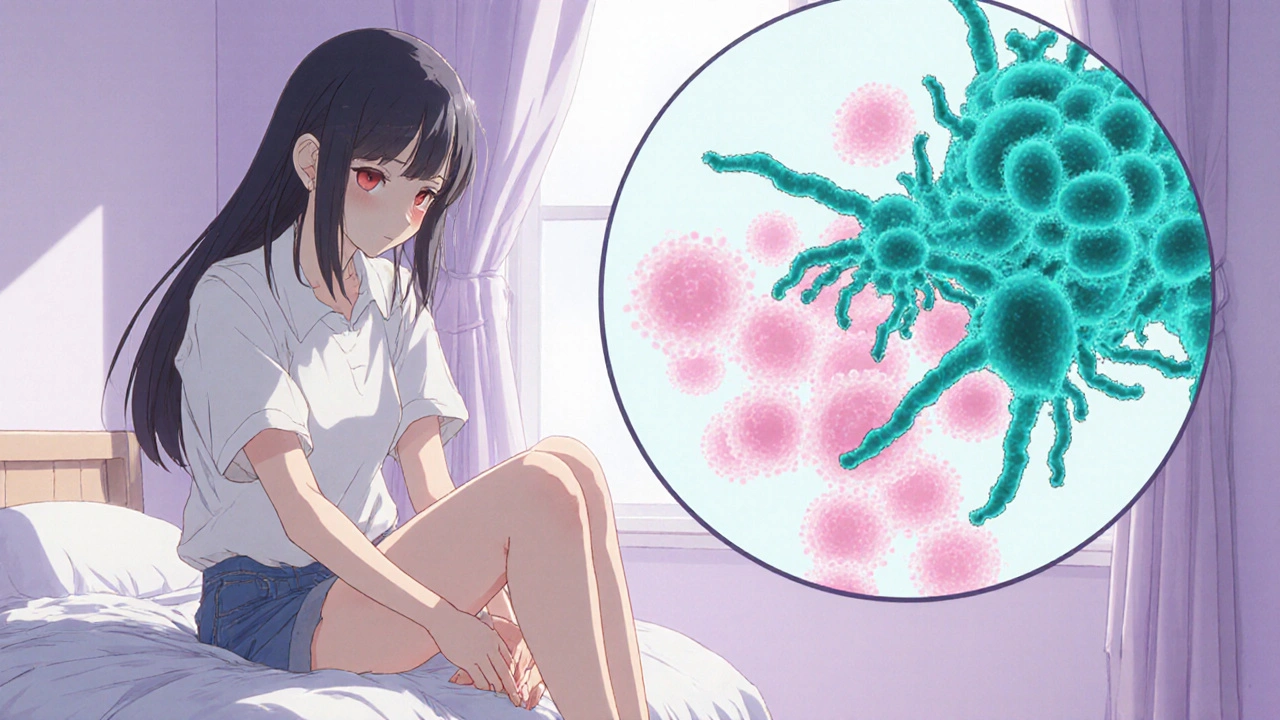Yeast Infection Treatment: Effective Remedies, Causes, and What Actually Works
When you’re dealing with a yeast infection, a common fungal overgrowth usually caused by Candida albicans that affects the vagina, mouth, or skin folds. Also known as candidiasis, it’s not a sign of poor hygiene—it’s a normal imbalance that happens to nearly 75% of women at least once in their lives. The itching, burning, and thick white discharge aren’t just annoying—they can make you feel embarrassed, tired, and frustrated. But here’s the thing: most yeast infections are easy to treat if you know what to do.
Most cases are caused by Candida, a type of fungus that lives naturally in your body but can grow out of control when antibiotics, hormones, or sugar levels throw things off balance. Antibiotics wipe out good bacteria that keep Candida in check. Birth control pills and pregnancy raise estrogen, which feeds the fungus. Even too much sugar—yes, even from fruit or sweetened drinks—can fuel the overgrowth. That’s why some people get recurrent infections: they treat the symptom but never fix the trigger.
The good news? You don’t always need a prescription. Over-the-counter antifungal creams like clotrimazole or miconazole work just as well as doctor-prescribed pills for most first-time infections. Oral fluconazole is fast and effective, but it’s not always necessary. Many people find relief with simple fixes: wearing cotton underwear, skipping scented soaps, and cutting back on sugar. Probiotics—especially those with Lactobacillus strains—help restore balance, and some studies show they reduce recurrence when taken regularly.
But here’s what most people miss: not every itch or discharge is a yeast infection. Bacterial vaginosis, trichomoniasis, or even skin irritation from laundry detergent can mimic the same symptoms. If it doesn’t clear up in a few days, or if it keeps coming back, you need the right diagnosis—not just another antifungal. That’s why the posts below cover everything from how to tell the difference between yeast and other infections, to which treatments actually work long-term, and even how certain medications like SSRIs or antibiotics might be making things worse.
You’ll find real-world advice here—not theory. People who’ve been through this know what helps: what works for one person might not work for another, and the posts below reflect that. Whether you’re looking for the safest OTC option, wondering if coconut oil actually helps, or trying to understand why you keep getting infections after your period, you’ll find clear, no-nonsense answers.
Antibiotic Yeast Infection Prevention & Treatment Guide
Learn how antibiotics trigger yeast infections and discover proven prevention steps, treatment options, and practical tips to stay symptom‑free.

